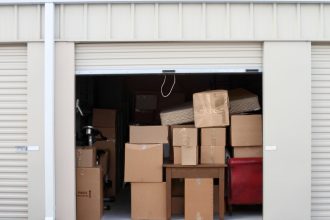Key takeaways
- To save for a down payment, you can automate your savings, explore additional income sources and reprioritize your savings goals.
- Search your local or state housing authority for down payment assistance programs you might be eligible for.
- There are other costs that come with buying a home you should budget for as well, like maintenance or repair expenses and closing costs.
If you’re trying to buy a house, the thought of setting aside enough money for a down payment can feel impossible. Forty percent of aspiring homeowners cite the inability to afford a down payment and closing costs as one of the biggest barriers to purchasing a home, according to Bankrate research. But there are ways to make it happen. Read on to learn how to save for a down payment, how much money you’ll actually need and the other costs you should consider in your budget.
Know how much money to save for a down payment
The old standard of 20 percent for a down payment comes with some upsides, including no need for mortgage insurance and a lower principal balance to start your mortgage. However, it’s become much more common to put down less, and most mortgages have smaller minimum down payment requirements:
- Conventional loans: Some conventional loans allow down payments of just 3 percent of the purchase price. For a $350,000 home, that equals $10,500. However, with a down payment of less than 20 percent, you’ll need to pay private mortgage insurance until you reach 20 percent equity in the home.
- FHA loans: Loans insured by the Federal Housing Administration (FHA) only require a 3.5 percent down payment of the purchase price. On a $300,000 home, that equals $10,500. You’ll need a credit score of 580 for an FHA loan, or 500 if you have 10 percent down.
- VA and USDA loans: Loans from the U.S. Department of Veterans Affairs (or VA loans) don’t require a down payment. Similarly, if you meet the requirements for a U.S. Department of Agriculture loan, you won’t need a down payment.
- Jumbo loans: Jumbo loans are for home purchases that exceed conforming loan limits set by the Federal Housing Finance Agency. These mortgages often require a higher minimum down payment — anywhere from 10 percent to 20 percent — which can vary by lender, location and loan size.
How to save for a down payment: 8 ways
When it comes to how to save for a house, there are several ways to do it:
1. Park the savings somewhere you can earn more money
While you might be worried about mortgage rates that are much higher than they were two years ago, the current interest rate environment is great news for your savings. Select banks and credit unions are paying upwards of 5 percent APY on deposits. If your money is currently stashed in an account with a nominal interest rate, think about moving your money to one of these places:
- High-yield savings account: High-yield savings accounts earn their name by offering significantly higher earning potential than standard savings accounts. For example, some online banks are paying between 4 and 5 percent for high-yield savings customers.
- Money market account: Money market accounts are a cross between a checking and savings account. So, you can still easily spend your money (although you don’t want to if you’re saving for a down payment) while taking advantage of higher interest rates.
- Certificate of deposit (CD): CDs are fixed-rate savings products with fixed terms. So, unlike a savings or a money market account that features variable rates, CDs come with the promise that you’ll earn a set return until the maturity date arrives. Keep in mind your timeline, however. You wouldn’t want to put your savings into an 18-month CD if you’re planning on buying in the next year, for instance, because you’d likely pay a penalty for taking out your money early. If you have a few years before you plan to buy, you might consider doing a CD ladder to account for changing interest rates and avoid being tied into a single, long-term CD.
2. Automate your savings
With this approach, you’ll set up automated deposits of a portion of your income into an account for your down payment. For employees with a directly-deposited regular paycheck, you can have your employer transfer a percentage of your paycheck to your down payment account on payday. For freelancers, contractors or business owners, you can schedule a regular, automatic transfer to your down payment account.
3. Explore additional sources of income
If you have the spare time and effort, another income source can help you save for a down payment. That can mean taking up a side hustle like freelancing, pet sitting, babysitting or working for a gig app company (like Uber, Instacart or Doordash). You might even be able to turn a hobby into a way to make money.
4. Look for down payment assistance programs
Down payment assistance could be an option if you’re struggling to save, especially if you’re a first-time buyer. This assistance can come in various forms, from deferred or forgivable loans to down payment grants. Each program has different eligibility requirements, usually based on income and location. Start your search with your area’s local or state housing authority to see if you qualify.
In addition, some mortgage lenders offer programs that match a specific amount of your savings. Those matched funds can then be applied to the down payment or closing costs. You might also be able to get matching as part of an IDA, which stands for Individual Development Account. These are often available via non-profit or government-backed assistance.
5. Reduce your expenses
If you’re saving for a house, cutting back on your spending can help. Start with cutting unnecessary expenses, like subscription services, entertainment, delivery services or eating out. If possible, negotiate down recurring monthly or annual expenses, such as getting a better car insurance rate or reducing an internet bill. In addition, reducing as much of your outstanding debt as possible can also help you accelerate savings for a down payment. With less debt, you can redirect money to your down payment fund.
While not an option for everyone, if you’re able to, moving back into your parents’ house temporarily can help you save for a down payment. As of April 2024, the national median monthly rent was $1,987 according to Rent.com. If you are able to move back home and save that money, that would mean saving about $23,844 after a year.
6. Request a raise
While each company’s financial situation and performance measures vary, you might be able to get paid more, especially if you have made valuable contributions recently. Come to the discussion prepared, outlining the work you’ve done and how it’s impacted the company’s bottom line.
7. Ask for a gift
Many first-time homebuyers have turned to family members for help with a down payment. If a family member or friend is willing to give you some funds for your home, be sure to document this in a gift letter for your lender.
8. Reprioritize your savings goals
Your down payment isn’t the only reason you’re stashing money away. As you think about trying to buy a home, it’s important to take a holistic look at your finances. If you’re young and you have been regularly contributing to a 401(k) and/or an IRA, you might consider reducing those contributions temporarily to help boost your savings for a home purchase. Just remember to restart those full contributions once you move in.
There are pieces of your savings strategy, however, that should not be touched. Your emergency fund should remain intact. Once you buy a home, you’ll need that extra cushion to deal with the routine maintenance that comes with being a homeowner.
How long should you plan to save for a down payment?
How long you should save for a down payment depends on how much money you’re putting down and how much you can set aside. When saving for a house, it’s important to remember that location plays a big role. A 10 percent down payment on a house in San Jose, California, is going to be larger than the same house in Jackson, Mississippi.
Timing is another important factor when saving for a house. You might opt to put less money down and take a higher interest rate in exchange for owning a home sooner.
To see how much your down payment will affect your monthly mortgage payment, run the numbers with Bankrate’s mortgage down payment calculator. You can also see how varying interest rates will affect your monthly payment.
Other costs to save for when buying a home
How to come up with a down payment may be the biggest question mark on your mind right now, but there are other expenses you need to factor in before you begin hunting for a home, including:
- Closing costs: Closing costs might include an origination fee, title fee, appraisal fee and more. They typically cost 2 to 5 percent of your mortgage’s principal amount.
- Mortgage reserves: Depending on your credit or financial situation, your lender might require you to have several months’ worth of mortgage payments in reserves.
- Maintenance: You’ll need money to pay for things like painting, cleaning and maintaining home systems, such as heating, plumbing and electrical. The typical homeowner spent more than $2,400 on maintenance last year, according to the 2023 State of Home Spending Survey from Angi.
- Moving expenses: Depending on the distance and amount of stuff you’re moving, the costs can add up. The average cost to hire movers ranges between $878 and $2,541, according to Angi. A long distance move is going to be more expensive.
- Emergencies: When you own a home, it’s especially important to have an emergency fund. This is money you’ve set aside in case something unexpected happens, like job loss, your furnace goes out or you get injured. Ideally, an emergency fund will cover your bills for several months.
Bottom line
The down payment for a home purchase is a significant expense that often keeps many prospective homebuyers on the sidelines. You can save for a house by using high-yield savings and CD deposit accounts, cutting back your spending elsewhere and looking for down payment matching programs. If those strategies aren’t enough, you might also consider asking for a raise at work or even moving back home for a while to cut rent payments altogether.
Read the full article here














